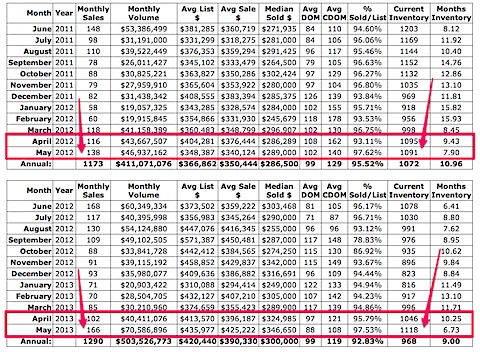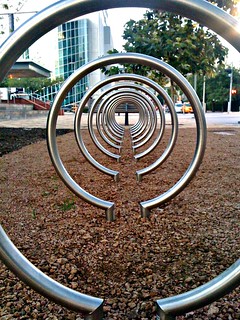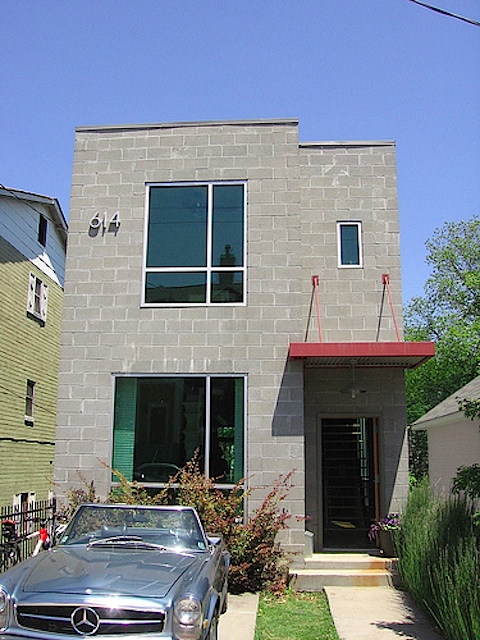I’ve been a real estate agent in Charlottesville since 2001 and I’ve never seen this volume of pocket listings. Is it due to the ubiquity of the internet, the sellers’ market (for some segments) or both?* As a consumer, how does this matter to you?
Pocket listing: pocket /?päk?t/ listing /?listiNG/
noun
A listing for a property that is held by an agent in his or her pocket, marketed quietly (but not surreptitiously), usually within his sphere or brokerage.
Quality homes for sale in some segments of the Charlottesville market remain in very high demand and seemingly equal low supply, and sales in some micro-market segments are up.
A brief look at inventory levels and sales in the City of Charlottesville and County of Albemarle, year-over-year –

Some insight into what I’m seeing with respect to pocket listings in Charlottesville:
– I get at least one email every other day either marketing a pocket listing or seeking a specific home type for sale from an agent within my firm or from an agent from another brokerage
– I pitch a short-term pocket listing process to many of my seller clients when we deem it appropriate
– More and more, pocket listings – at least for a short period of time – make sense. In other words, they’re working.
– I like how Steve Harney lays out some of the advantages and disadvantages of pocket listings.
Advantages to pocket listings that I tell my clients:
– Sellers can test the market – as in, if you put the house on the pocket market for $450,000 and initial feedback reveals that $425,000 is where the price should be, then we’re able to list the house in the MLS for $425k and the wider market doesn’t see that price reduction.
– Often, the seller doesn’t have to have the full “list of things that need to be done” completely finished – a room or two can be left unpainted or in-process – as the listing agent can vet and prep the agents showing the house during the pocket listing period.
– Don’t have to go through the full invasive experience of having your house shown. (selling a house usually sucks; it’s invasive, sellers need to keep the house spotless and it alters schedules remarkably). In other words, how does one quantify sanity and quality of life through the home sale process? I can see some sellers valuing not having to their home open to the public, as it were, at $10k, others $50k, some notsomuch. There is rarely a one-size-fits all answer.
– For the seller – this is an opportunity to test drive the selling process.
– For the buyer – they get access to a property that other buyers don’t.
Disadvantages –
– Seller doesn’t get full exposure to the market by not listing in the MLS. By not exposing the house to the entire market, the seller might realize a lower sales price.
– The MLS is a less accurate thing if the sales aren’t entered into the MLS – less accurate for searching for homes for sale as well as researching prices for comps and sold homes.
– This practice could be a means by which cooperative compensation’s usefulness is minimized.
– The risk for single agent dual agency may be greater. (only one party benefits in this situation – it’s not the client)
– Buyers – may pay a higher than market value as the market is so small and the demand is (artificially(?)) higher.
– More closed markets – some neighborhoods and price points seem to be more amenable to the pocket listing route – with seemingly few agents who have access to what’s going on in this sub-market.
So – what’s a consumer to do?
– Buyer or seller – Understand the inefficiency of the market.
– When interviewing your buyer’s agent (you do that, right?) – ask how tapped into the quiet market they are.
– If you’re a seller – have the conversation with your prospective representative about single agent dual agency, and discuss what happens if the agent procures a buyer. (my answer: I’d either have the buyer be unrepresented or have send them to another competent agent)
– If you’re a buyer – determine what it is that you’re looking for. “I’m looking for a four bedroom home in Crozet or Brownsville between $450k and $500k on less than an acre” is a better email to send to agents than “I need a house in Albemarle that my clients will like” 🙂
The Virginia Association of Realtors‘ listing agreement speaks to advertising in part, highlighting how important it is for sellers and brokers to discuss how a property will be marketed. In short, marketing through the MLS is usually the best course of action.
5. (a) Unless otherwise provided herein, Owner hereby authorizes Broker to submit pertinent information concerning the listing of the Property (including information which may be provided on a separate form or document) to any Multiple Listing Service “MLS” serving the geographic area in which the Property is located of which Broker is a member to distribute such information to other Brokers, and to solicit the cooperation of other Brokers in securing a purchaser or purchasers for the Property.
c) Broker shall have the right to advertise the Property in commercially reasonable ways, and unless otherwise provided herein, shall have the right to place advertisements of the Property on the Internet® communications network and in any Internet Data Exchange program in which Broker participates.
(d) Owner authorizes the dissemination of Property/sales information to MLS participants, including electronic format, magazines and other media.
Note: not all brokers in Charlottesville participate in IDX.
For six different perspectives (not necessarily opposing, but different) –
– The MLS debate and the end of real estate software (1000 Watt)
– Pocket Listings and MLS Accuracy (Notorious R.O.B.)
– Real Estate: Pocket Listings in a Tight Market (Calculated Risk)
– Sellers can decide if – ‘pocket listing’ is right for them (Teresa Boardman)
– ‘Pocket Listings’ – What Do You Think? (KCM Blog)
– Can I get a death watch for the MLS DeathWatch? (Todd Carpenter)
* I’m also wondering whether my awareness to this is due to the fact that I’m more tapped into the real estate community now than I was when I started; that’s likely part of the equation, but certainly not all.
** As a further aside, I’m always looking at data accuracy –
When searching for homes for sale in the 22932 zip code (Crozet):
– Zillow shows 162 homes for sale – 144 by agent, 3 by owner, 14 new construction, 1 foreclosure (and I know it’s a small thing, but Zillow thinks 22932 = Free Union. 22932 = Crozet)
– Trulia shows 153 homes for sale – with no breakdowns available
– My site shows 138 homes for sale in 22932
– Nest’s site shows 189 in Crozet (zip code isn’t an option)
– The Charlottesville MLS shows 139 active homes for sale
Read More



![water_st_maples [Explored 10/18/2012]](http://farm9.staticflickr.com/8332/8101051797_eef4b59e4f.jpg)

